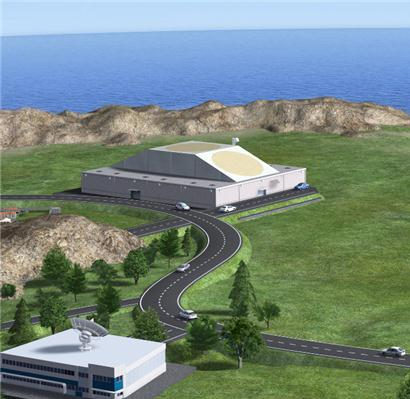By Kalwinder KaurSep 15 2012
A new contract worth €4 M has been signed by ESA and France’s Office National d’Etudes et Recherches Aérospatiales (ONERA) research centre. Under this contract initiative, the French organization as well as five industrial partners in Switzerland, France, and Spain will design test surveillance radar and create a demonstrator model. The operation commences this month.
 The SSA programme is enabling Europe to detect hazards to critical space infrastructure. This artist's impression shows a possible design for the future radar system, which will scan low Earth orbits to detect hazardous debris objects and deliver data to a catalogue database. Credits: ESA - P. Carrill
The SSA programme is enabling Europe to detect hazards to critical space infrastructure. This artist's impression shows a possible design for the future radar system, which will scan low Earth orbits to detect hazardous debris objects and deliver data to a catalogue database. Credits: ESA - P. Carrill
According to the Head of ESA’s Space Situational Awareness (SSA) Preparatory Programme, Nicolas Bobrinsky, representing the culmination of this agreement, the development of new demonstrator radar will enable evaluation and validation of techniques for examining orbital debris.
Satellite operators can be aware of collision risks through early debris detection that also supports avoidance maneuvers. Mp>The radar will utilize ‘bistatic’ technology, after the previous parallel contract between ESA and Spain's Indra Espacio SA for creating a ‘monostatic’ approach-based test radar.
According to the Ground Segment Manager in ESA’s SSA office, Gian Maria Pinna, comparative testing using techniques validated by radar designs will enable better examination of orbital debris. The initial complex network of sensors will involve two radar demonstrators. Also, the optical telescopes and data processing centres will be exploited for detecting debris objects in any orbital region. With radar technology being effective for detecting objects in low and highly elliptical orbits, optical technology can better support detection of objects in medium and geostationary orbits.
Radars operate by generating radio energy at a target, followed by recognition of the reflected signal. The monostatic radar will have the emitter and the receiver at the same spot, where the emission of energy takes place in discrete pulses. Conversely, bistatic radar will have separate emitter and receiver with consistent energy generation.
The new test radar will have its emitter based at a former airport near Crucey-Villages, with 100 km west of Paris, while the receiver is positioned at the south of Paris, near Palaiseau.
The new contract represents the support provided by ESA’s SSA activities to the European industry.
Disclaimer: The views expressed here are those of the author expressed in their private capacity and do not necessarily represent the views of AZoM.com Limited T/A AZoNetwork the owner and operator of this website. This disclaimer forms part of the Terms and conditions of use of this website.